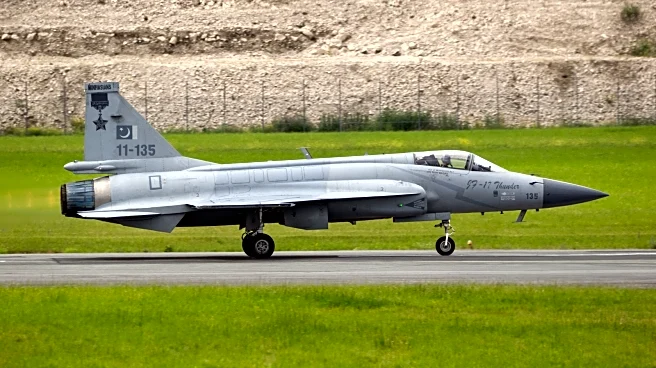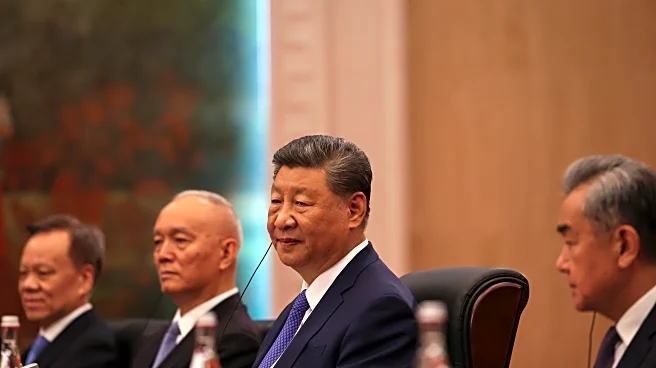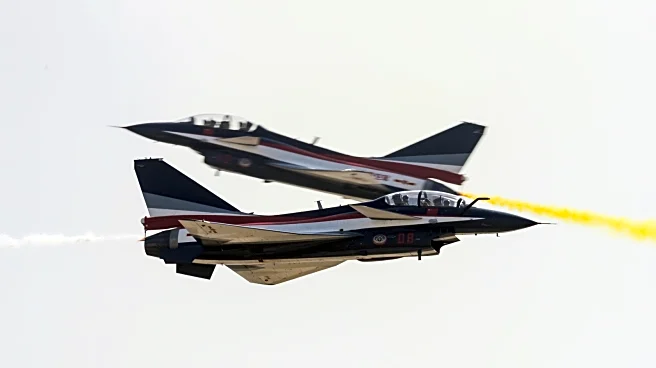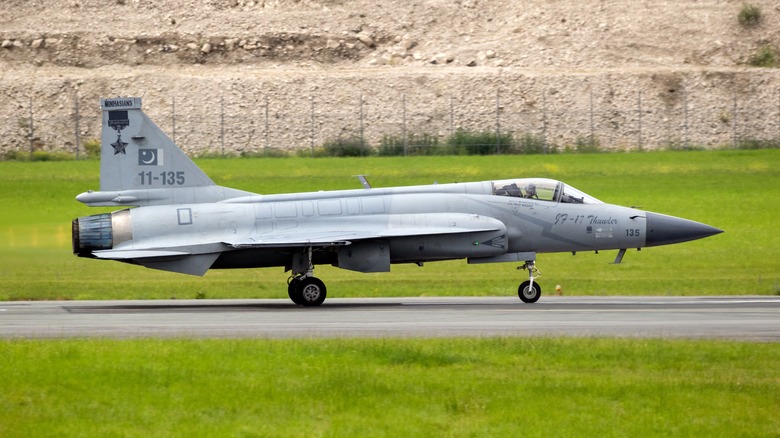
The JF-17 Thunder is a lightweight, single-engine, multirole fighter jointly developed by Pakistan Aeronautical Complex (PAC) and China's Chengdu Aircraft Corporation (CAC). The program began in the 1990s after U.S. sanctions halted Pakistan's earlier fighter projects. The first prototype rolled out in May 2003, with the maiden flight taking place later that year. PAC began assembling the jets locally in 2009, gradually increasing production to around 25 aircraft per year. The JF-17 was designed
to replace the aging PAF fleets of the Mirage III and Chengdu J-7 fighters.
The Block III variant, which debuted in July 2025, features advanced avionics, an AESA radar, a wide-angle holographic HUD, helmet-mounted sights, and compatibility with long-range PL-15 missiles. These upgrades push the jet into the 4.5-generation class. The airframe is 47 feet long, with a 31-foot wingspan and a height of 15 feet. Powered by a Klimov RD-93 afterburning turbofan producing 19,000 pounds of thrust, the JF-17 can reach Mach 1.6 (about 1,227 mph) and climb at 59,000 feet per minute. It has a service ceiling of 55,500 feet and an operational range of 842 miles, extendable via aerial refueling.
Read more: 10 Airplanes That Managed To Fly With Staggeringly Low Horsepower
Combat Capabilities And Armament

The JF-17 was built as a versatile combat platform capable of handling air-to-air, air-to-ground, and maritime strike missions. It has eight hardpoints carrying up to 7,500 pounds of ordnance. Weapons include beyond-visual-range (BVR) air-to-air missiles, anti-ship missiles, precision-guided bombs, and a 23mm twin-barrel cannon. The aircraft's electronic warfare suite, radar, and cockpit displays allow it to track and prioritize multiple targets.
The Block III's AESA radar improves detection range and resistance to jamming, while the helmet-mounted display system boosts targeting speed in dogfights. The PL-15 BVR missile gives the JF-17 a reach advantage over older regional fighters. Moreover, it also becomes one of the fighter jets with the longest range thanks to its air-to-air refueling capability that expands its operational flexibility for long-range missions. The PAF has used the JF-17 in domestic counterterrorism strikes and high-intensity conflicts.
In February 2019, JF-17s were reportedly involved in the downing of an Indian MiG-21 during a border clash. In 2017, a JF-17 shot down an Iranian drone operating in Pakistani airspace. More recently, JF-17 Block IIIs participated in joint operations with Chengdu J-10Cs, which were instrumental in disrupting Indian airstrikes during the May 2025 Pakistan-India conflict, reportedly engaging Indian Rafales, Su-30MKIs, and MiG-29s.
Global Presence And Recent Achievements
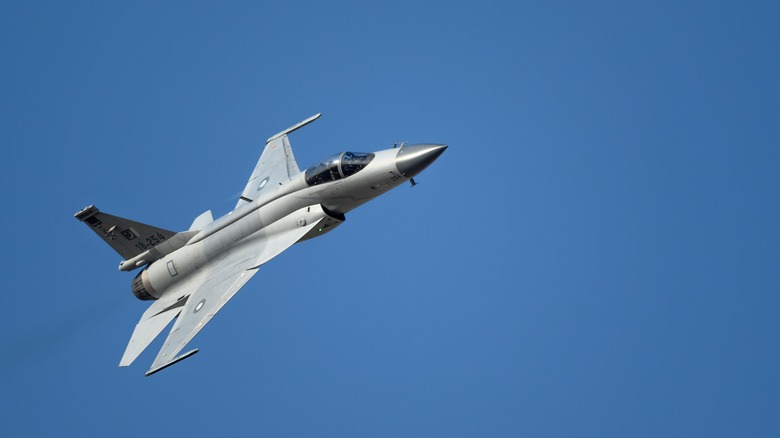
Pakistan has exported the JF-17 to Nigeria, Myanmar, and soon Azerbaijan, which recently expanded its order to 40 Block IIIs in a $4.6 billion deal. The aircraft's low acquisition and maintenance costs make it attractive to nations seeking modern capabilities without the expense of Western fighters. Future potential buyers include Sri Lanka, Egypt, and Malaysia.
The JF-17 continues to make its mark internationally. In July 2025, the Block III made its debut at the Royal International Air Tattoo (RIAT) in the UK, winning the prestigious "Spirit of the Meet" trophy. The aircraft flew to the show with air-to-air refueling support from a PAF IL-78, showcasing its extended operational reach. Alongside the fighter, a PAF C-130H in a special "Eyes in the Skies" livery won the "Concours d'Elegance" award.
Operationally, the JF-17 has proven itself in strikes on militant targets in Pakistan, precision attacks on insurgent bases in Iran, and high-stakes engagements with the Indian Air Force. As more Block IIIs enter service, the PAF's fleet, one of the largest air forces in the world, will benefit from enhanced sensors and missile capabilities, ensuring the JF-17 remains a core element of Pakistan's airpower strategy well into the future.
Want the latest in tech and auto trends? Subscribe to our free newsletter for the latest headlines, expert guides, and how-to tips, one email at a time.
Read the original article on SlashGear.
